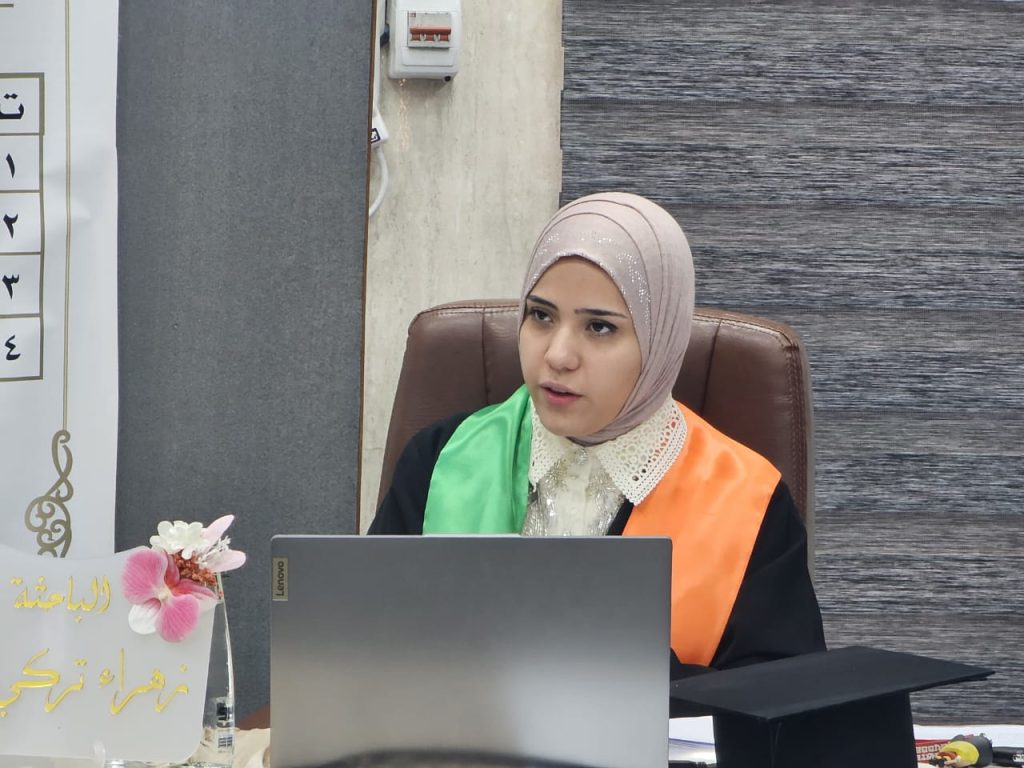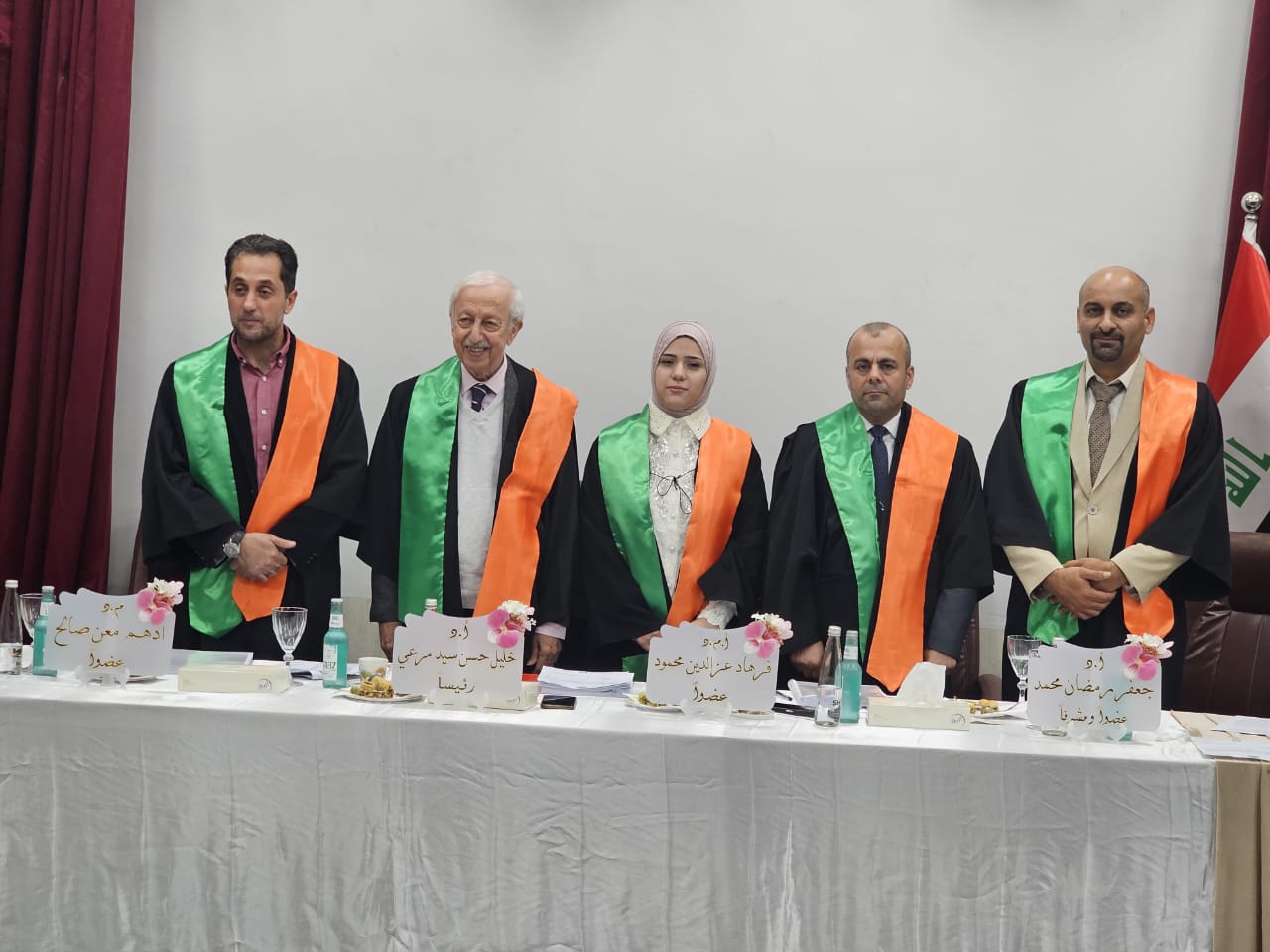The College of Electronics Engineering at the University of Ninevah / Department of Communications Engineering held the defense of the master’s thesis of the student Zahraa Turki Hassan on Monday, 20 November 2025, for her thesis entitled:
“An Investigation into Array Pattern Beam Broadening Techniques for Global Internet Access Applications.”
The thesis explored innovative methodologies for generating wide beams in linear and planar antenna arrays designed for low Earth orbit (LEO) satellite applications, with the aim of efficiently supporting global internet coverage. The study relied on phase-only control, in addition to a new amplitude tapering scheme based on the trapezoidal amplitude taper, due to its improved radiation characteristics compared to traditional tapers.
The research aimed to address the issue of narrow beamwidth in LEO satellite systems by proposing two phase-only beam-broadening techniques:
1. Quadratic Phase Method
2. Phase Optimization Using the Genetic Algorithm (GA) combined with the trapezoidal amplitude taper
A mathematical model was developed using a cost function that included the Side Lobe Level (SLL), First Null Beamwidth (FNBW), and sidelobe nulls. The results were then compared with classical techniques to demonstrate the efficiency of the proposed methods.
The findings showed a clear improvement in radiation characteristics through the integration of the trapezoidal taper with phase-only control. The quadratic phase method achieved greater directivity at FNBW = 40° compared to traditional techniques, while the GA-optimized method provided superior performance at 40° and 80° beams by attaining higher directivity while maintaining the required beamwidth accurately. Comparisons also showed that the Woodward–Lawson method offers stable performance but remains less efficient than the proposed approaches, whereas the GA-based method achieved an ideal balance between beam broadening and reduced sidelobes without increasing system complexity.
These results confirm that combining the trapezoidal amplitude taper with phase-only control—particularly with genetic optimization—constitutes a promising approach for generating wide beams with high directivity and high reliability suitable for satellite communication applications.
The examination committee consisted of:
1. Prof. Dr. Khalil Hassan Syed Maree – University of Ninevah / College of Electronics Engineering (Chair).
2. Assoc. Prof. Dr. Farhad Azaddin Badr Mahmood – University of Mosul / College of Engineering (Member).
3. Assist. Prof. Dr. Adham Medhat Saleh – University of Ninevah / College of Electronics Engineering (Member).
4. Prof. Dr. Jaafar Ramadan Mohammed – University of Ninevah / College of Electronics Engineering (Member and Supervisor).
In conclusion, the College extends its warmest congratulations to the student and to the members of the examination committee, wishing them continued success and prosperity.








